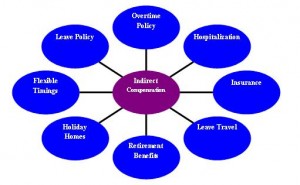Certify and Increase Opportunity.
Be
Certified Compensation & Benefits Manager
Economic Theories
Three Economists and Their Theories
The three most important economists were Adam Smith, Karl Marx, and John Maynard Keynes (pronounced canes). Each was a highly original thinker who developed economic theories that were put into practice and affected the world’s economies for generations.
Human Resource is the most vital resource for any organization. It is responsible for each and every decision taken, each and every work done and each and every result. Employees should be managed properly and motivated by providing best remuneration and compensation as per the industry standards. The lucrative compensation will also serve the need for attracting and retaining the best employees.It is the remuneration received by an employee in return for his/her contribution to the organization. It is an organized practice that involves balancing the work-employee relation by providing monetary and non-monetary benefits to employees.It is an integral part of human resource management which helps in motivating the employees and improving organizational effectiveness.
Types
Compensation provided to employees can direct in the form of monetary benefits and/or indirect in the form of non-monetary benefits known as perks, time off, etc. It does not include only salary but it is the sum total of all rewards and allowances provided to the employees in return for their services. If the compensation offered is effectively managed, it contributes to high organizational productivity.
1.Direct
2. Indirect
Compensation decisions are influenced by many factors – labor law compliance, industry characteristics and the economic environment, among others. Economists have been developing theories to understand wage determination for centuries.
Economic Theories in Compensation Management
Economists view employment as an exchange of labor services in return for payment of money or payment in kind. They also view compensation as a function of labor market dynamics, particularly demand and supply. Wage theories thus aim to explain how wages are determined and how wage relationships are developed in this context. There are several different wage theories, historical and modern, that apply to different kinds of wages paid and different problems associated with wage determination.
Historical Wage Theories
- Subsistence Theory: Also called the Iron Law of Wages, this theory proposes that wages tend towards a minimum wage necessary to sustain basic need of a worker over the long run. Thus wages cannot fall below a certain subsistence wage level since workers will be unable to work at wage levels that do not allow them access to the most basic of necessities. Subsistence theory also believes that there is an inherent equilibrium, which is achieved whenever there is an imbalance between labor supply and demand, which will lead to the resetting of the minimum or subsistence wage. In simpler terms, whenever wages are higher, the number of workers will increase until there is excess, which will force wages to decrease to the subsistence level.
- Just Price Theory: This theory proposes that wages are set in accordance with established status distributions in society. Thus the aim is to regulate wage levels in such a way as to allow individuals to maintain their place in society. Even though this theory was popular in the time of Aristotle and Plato, one can see its influence even in today’s compensation systems where maintaining the status of a group of employees drives compensation behaviors (e.g. supervisors are paid more than the people who report to them).
- Surplus-Value Theory: This theory posits that the value created by a worker in excess of what he gets paid is the surplus value that is appropriated by the business as profit. Thus, a business can generate tremendous increases in wealth, productivity and capital resources by maximizing the surplus value generated by employees.
- Wages Fund Theory: This theory assumes that wages are regulated by how much fixed capital employers have allocated to a wage-fund against the number of workers available in the labor market. The basic assumption here is that the wage fund is a fixed and unchanging amount and so wage rates will fluctuate up or down based on the number of available workers in the market.
Modern Wage Theories
- Marginal Productivity Theory: This theory proposes that the demand for labor is determined by the marginal productivity of that labor, and wage rates are determined by the value of the marginal product of labor. In simpler terms, organizations value the efforts of a worker in terms of the revenue earned by employing each additional worker. Operating under the assumptions of this theory, an organization will continue to employ workers until the marginal revenue product is equal to the wage rate, because it would not be efficient for an organization to pay its workers more than the revenue generated by the work. Employment and wages are thus inversely related according to the marginal productivity theory.
- Human Capital Theory: This theory looks at the effects of experience, skills, on-the-job training and education on the workforce, and the decisions that employers and employees make regarding investments in human capital. Analysis of wages according to the human capital theory show that the amount of early schooling a worker receives is directly proportional to the wage the worker commands. On the other hand, schooling received in later years does not contribute to a wage differential in any significant manner.
Apply for Compensation and Benefits Certification Now!!
http://www.vskills.in/certification/Certified-Compensation-and-Benefits-Manager


